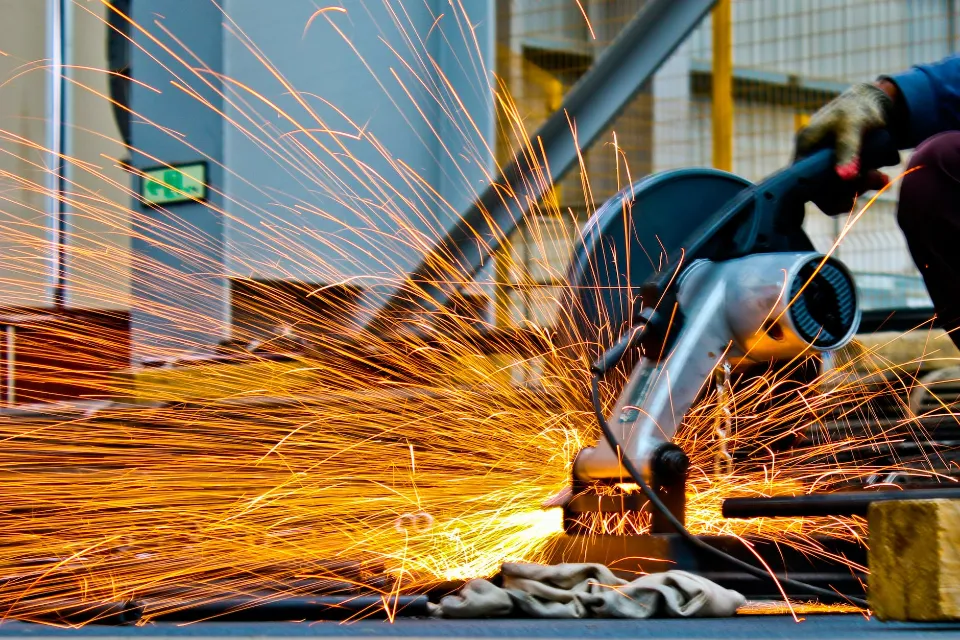
Electric water pumps have been in use for quite some time. The use of electric water pumps, including both primary water pumps and those in charge of managing a vehicle’s thermal system will be highlighted in the following as we chart this evolution. Continue reading, you will learn more about electric water pumps including the parts and work.
Table of Contents
What is An Electric Water Pump?
An electric water pump (EWP) is a mechanical device that is electrically propelled. This pump drives through an electric motor. The switchboard is used to distribute power from the transformer. After that, this power delivers from the switchboard to the electric pump via a power cord that attaches to the water pipe.
Electric submersible pumps are also called ” submergible ” because they are mainly used in oil production for the manual lifting of oil.
In the automotive industry, mechanical pumps are used to pump water from wells for fuel injection and water cooling. They are also used for filtering aquariums, ventilating and cleaning ponds, and many other uses.
Pumps are used in the biochemical process of developing and producing drugs in the medical field. They are used as artificial hearts, penile prostheses, and replacements for other human body parts.
Electric pumps are used in the energy sectors to drive cooling towers, natural gas and oil pumps, and other components of HVAC (air conditioning, ventilation, and heating) systems.
How Does An Electric Water Pump Work?
The transformer delivers the necessary electricity via a switchboard to power an electric water pump, which needs electricity to operate. The electric pump’s motor changes electrical energy into mechanical energy.
When using an electric pump, the entire assembly is submerged in the liquid being pumped. While others can only be partially submerged, some of these pumps can be submerged or placed in a dry location.
A multistage centrifugal pump with perpendicular operation serves as the submersible pump in the ESP device.
The liquid is forced to the bottom through the pump’s inlet or the gas separator as the electric submersible pump’s impeller rotates in tandem with the shaft. The input-to-production ratio and productivity index, which represent the potential productivity from the reservoir, must be calculated using artificial lift data.
Because the reservoir’s pressure is insufficient to force the oil to the surface, an artificial lift is a technique used to lift hydrocarbons from the reservoir to the surface. Above-ground facilities and underground facilities are the two different categories of artificial lifts.
When the generated liquid is subjected to the powerful centrifugal force produced by the high speed of the impeller, the diffuser loses its kinetic energy, which is how mixed flow and radial pumps work. The kinetic energy becomes pressure energy in the diffuser.
What is the Purpose of the Electric Water Pump?
The water pump pushes coolant from the radiator through the coolant system, into the engine, and back around to the radiator. At the radiator, the coolant transfers the heat it picked up from the engine to the air. The coolant simply sits in the system in the absence of the water pump.

What Are the Components of the Electric Water Pump?
The electric pump has the following major components:
Motor
A two-pole, three-phase, 3500 rpm squired cage induction motor with the ESP runs at 60 Hz. To ensure dielectric strength, this motor is filled with extremely high-insulating mineral oil. It has excellent bearing thermal conductivity and lubricity.
To achieve the required performance, the motor frame can be one piece or multiple bolted-on tanned pieces. The motor makes its choice based on the largest outside diameter that can be used within a particular frame size.
Pump
A multistage centrifugal pump is what an electric submersible pump is. The ideal flow rate range is maintained by a well-designed electric centrifugal pump. Depending on the reservoir’s capacity, this flow rate changes.
The design volume fraction of liquid production is determined by the stage type being used. The total number of construction heads produced and the required motor power depend on the number of stages.
Power Cables
The downhole motor is powered by a unique submersible cable. These power cables come in two varieties: flat cables and round cables. One of the three conductors used to transport electricity from the switchboard to the motor is an electric cable.
The insulation layer’s composition and thickness control the conductor’s resistance to leakage current.
Inlet
Standard inlet and gas separator inlets are the two different types of inlets that are available for electric pumps. Previously, the liquid could enter the pump through these inlets. The intake lowers the amount of gas that enters the gas pump separator. We employ a gas separator inlet if the gas-to-liquid ratio exceeds the pump’s capacity.
Transformer
A three-phase autotransformer, a standard three-phase transformer, and three single-phase transformers are the three transformer configurations found in an electric submersible pump. Because the down-hole motor voltage requirements are different from the primary voltage drop, a transformer is needed.
Switchboard
A control panel, also known as a switchboard, is a device used to control motors. The typical switchboard voltage range is 600V to 4900V. The work surface for the control panel is another name for it.
Simple motor starters/disconnectors to highly complex monitoring devices are examples of control panel complexity. It offers protection to stop harm to the down-hole device. By identifying and shutting down abnormal power services, solid-state switchboards safeguard underground equipment.
Protector
Equalizers and sealed sections are other names for the protector. That high-resistance oil fills it up. The protector’s primary job is to keep the motor oil separate from the fluid in the wellbore while maintaining equilibrium between the internal pressure and the pressure at the wellbore’s bottom.
The protector serves a purpose. It has a thrust bearing that joins the casing to the drive shaft and connects the pump to the motor. It is also used for axial thrust absorption from the pump shaft and for separating the motor oil from the downhole fluid.

Wellhead
A wellhead is a particular style of snugly fitting suspension hose that serves as a pressure-limited seal. Around power cords and pipes, it provides a tight seal of pressure. Gas cannot pass through the cord because of this.
Pressure sensing instrument (PSI)
Data on downhole pressure and temperature are sufficiently provided by this portion of the ESP. A PSI surface-hole unit and a PSI down-hole unit are the two main components of the pressure-sensing device.
Junction box
The power cord from the switchboard is connected to the well-style power cord by the junction box. It may cause gases to leak into the atmosphere from the good power cable. This will stop gas from accumulating in the switchboard.
What Are the Benefits of An Electric Water Pump?
When it comes to the engine of your car, the electric water pump is truly a lifesaver. But how significant is it, and what advantages does it offer? Let’s find out.
Pressurized Flow
In comparison to its mechanical rival, the electric water pump has an advantage. The latter works with the help of the crankshaft, which means it is dependent on engine speed. The former has an electric motor backing it up, so the coolant pressure is high at all times and you get powerful coolant delivery into the various parts of the engine. This feature allows the system to cool down better and faster.
Consumes Less Energy
An electric water pump uses up a small amount of energy to function. It uses the car’s 12V output and provides a vital function for the vehicle. Additionally, using an electric pump does not result in significant energy loss. An uninterrupted supply of coolant is provided to the engine as a result of the steady power. The mechanical pump, on the other hand, extracts energy from the crankshaft which is then transferred onto the belt and pulley system and finally onto the pump. The water pump never receives the crankshaft’s full power.
They Have Less Friction
Mechanical water pumps have several moving parts, resulting in friction and the production of more heat inside the engine bay. The purpose is to lessen friction, and an electric water pump does this as effectively as it can. The water pump motor is effective and only activates when needed. It remains dormant and ready in all other cases. The electric pump also has lesser moving parts, and it comes in ideal packaging, which saves space and reduces friction.
What to Look at While Purchasing An Electric Pump?
You will look for an electric pump that meets your needs when you start the process of buying one. Some important factors to consider when starting shopping for the best electric pump are:
- Weight: A lightweight pump is a smart idea if you frequently commute to work or take trips.
- Sound: Comparatively speaking, only a few pumps make less noise. You must select a quieter pump if you intend to use it in a public area.
- Costs: When looking for a pump, cost should always be the primary consideration. As a result, it’s imperative that you pick a cheap pump that also meets your needs.
What Are the Features of an Electrical Water Pump?
The pump rotates via a shaft that is connected to the guard’s component parts, driven by an electrical motor that runs at a comparatively constant speed. During use, liquid enters the pump, which is powered from below by cables attached to the pipeline.
Pump efficiency increases as the liquid is produced, while a significant amount of free gas renders the pump useless. ESP can only handle 10% to 20% free gas or more; any more can lead to subpar performance.

Some other features of ESP are given below:
- This pump can create wells with high temperatures, gas, and oil with a high viscosity, among other things.
- At a specific depth in the well, the pump and motor are suspended on the tubing.
- When lifting large volumes of liquid from wells, an electrical water pump is efficient and affordable.
- Compared to other methods, it is expensive.
- If the circumstances are right, ESP can last for a number of years.
Is the Electric Water Pump Safe?
Manufacturers design submersible pumps to be safe. For instance, they enclose them in cast-iron housing that is intended to isolate the unit’s working and electrical components. Standard rubber is used to seal and shield all cables.
FAQ
Can We Drive a Car Without An Electric Water Pump?
In the event that we operate a vehicle without a water pump, the engine may overheat right away, necessitating an uncomfortable and costly stop.
Does An Electric Water Pump Add Horsepower?
Simply put, it doesn’t contribute. An electric water pump is battery-operated, as opposed to a mechanical water pump. This indicates that no tape feed is necessary.
How is An Electric Water Pump Different from a Mechanic Water Pump?
Electric water pumps use batteries as opposed to mechanical water pumps, which do not. This indicates that no tape feed is necessary.
How Does An Electric Water Pump Work?
The pump impeller propels engine coolant through the engine block, absorbing heat during the intake stroke before delivering it to the radiator. The coolant dissipates the heat in the radiator before returning to the pump.
What Are the Benefits of An Electric Water Pump?
With electric water pumps, manufacturers can more precisely control how much coolant flows through the engine within a given temperature range. As a result, it is very efficient and satisfies the engine’s unique cooling requirements.
Conclusion
The use of auxiliary and electric water pumps is rising, and the trend suggests that the demand will increase even further in the future. The time is now to invest! You should get your water pump as soon as possible because that’s what we would do.



